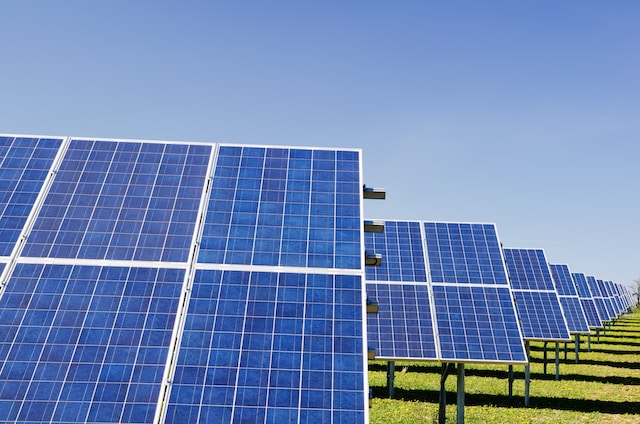In an era where climate change and environmental concerns have become paramount, the global shift towards renewable energy sources, such as solar power, has never been more crucial. Solar energy, in particular, stands out as a sustainable and accessible solution for reducing our carbon footprint and ensuring a greener future.
YouTube has emerged as a powerful platform for disseminating information and knowledge on a wide range of subjects. It’s not just a hub for entertaining videos but also a treasure trove of educational content. One area where YouTube has made a significant impact is in spreading awareness and expertise on solar energy. Whether you’re a passionate advocate of renewable energy or a solar enthusiast looking to share your insights, starting a solar energy YouTube channel can be an effective way to contribute to this movement.
Understanding Your Niche
- Homeowners Interested in Solar Installation: Begin by identifying your primary audience. Homeowners looking to install solar panels are often seeking guidance on the decision-making process, costs, benefits, and installation steps.
- Renewable Energy Enthusiasts: Appeal to those who are passionate about renewable energy and sustainability. Share insights into the broader renewable energy landscape, policy changes, and technological advancements.
- DIY Solar Projects Enthusiasts: Some viewers may be interested in do-it-yourself solar projects. You can create tutorials and guides for building solar-powered gadgets or small-scale solar installations.
Researching Existing Solar Energy Channels
- Analyzing Popular Solar Energy YouTubers: Study successful solar energy channels to understand their content strategy, presentation style, and audience engagement techniques.
- Identifying Gaps in Content: Look for content gaps or areas where you can provide a unique perspective or address topics that are not adequately covered by existing channels. This will help you stand out in the crowded YouTube space.
By understanding your niche and conducting thorough research, you can tailor your content to meet the specific needs and interests of your target audience, ultimately attracting and retaining viewers interested in solar energy.
Equipment and Setup
Camera and Recording Equipment
Investing in a good quality camera is essential for producing high-definition videos. While a DSLR or mirrorless camera is ideal, many YouTubers start with their smartphones, which can produce excellent results.
Audio Quality and Microphones
Clear audio is crucial for viewer engagement. Consider using an external microphone to improve sound quality. Lavalier (lapel) microphones or shotgun microphones are popular choices for YouTube creators.
Lighting and Video Background
Proper lighting can significantly enhance the quality of your videos. Invest in softbox lights or LED panels to ensure well-lit recordings. Choose an appropriate background that complements your content and creates a professional look.
Editing Software and Skills
Acquire video editing software such as Adobe Premiere Pro, Final Cut Pro, or free options like DaVinci Resolve or HitFilm Express. Develop editing skills to enhance the visual appeal of your videos, add graphics, and create engaging content.
Content Planning
Educational Videos on Solar Technology: Create informative content explaining the fundamentals of solar energy, including how solar panels work, the types of solar technology available, and their environmental benefits.
Installation Guides and Tutorials: Provide step-by-step guides for those interested in installing solar panels on their homes or small-scale solar projects. Offer tips, best practices, and safety advice.
Reviews of Solar Products and Equipment: Share honest reviews and comparisons of solar panels, inverters, batteries, and other solar-related products. Help your audience make informed purchasing decisions.
Creating a Content Calendar
- Consistency is Key: Establish a regular posting schedule, whether it’s weekly, bi-weekly, or monthly. Consistency helps build an audience and keeps viewers engaged.
- Storyboarding and Scripting: Outline your videos in advance, create scripts or bullet points to follow, and plan your shots to ensure a smooth flow of information.
- Using Visuals Effectively: Incorporate graphics, charts, and diagrams to illustrate complex concepts. Visual aids can make your content more engaging and easier to understand.
Filming and Editing
Framing and Composition: Pay attention to framing and composition to ensure your shots are visually appealing. Use the rule of thirds and experiment with angles to make your videos interesting.
Lighting Considerations: Maintain consistent lighting throughout your videos. Natural light or softbox lights can help reduce harsh shadows and create a pleasing look.
Basic Video Editing Skills
Trimming, Cutting, and Transitions: Edit your footage to remove unnecessary content, awkward pauses, or mistakes. Use transitions like cuts, fades, or wipes to smooth transitions between clips.
Adding Graphics and Text Overlays: Enhance your videos by adding text overlays for key information, subtitles, and graphics to illustrate concepts or data.
Enhancing Audio Quality
Noise Reduction and Audio Balancing: Use audio editing software to reduce background noise, balance audio levels, and ensure your voice is clear and easy to understand.
Voiceovers and Music Selection: Consider using voiceovers to narrate certain parts of your video. Choose background music that complements your content and sets the right mood.
Choosing Relevant Keywords
Keyword Research: Use tools like Google Keyword Planner, YouTube’s autocomplete, or dedicated SEO tools to find keywords related to solar energy that have high search volume and low competition.
B. Writing Compelling Video Titles and Descriptions
Title Optimization: Craft attention-grabbing, concise video titles that include relevant keywords. Make sure they accurately represent the video’s content.
Description Details: Write informative and keyword-rich video descriptions that provide context and additional information about the topic. Include relevant links, timestamps, and social media links.
Using Tags Effectively
Tagging Your Videos: Add relevant tags to your videos using keywords related to your content. Tags help YouTube’s algorithm understand your video’s subject matter.
Engaging Thumbnails
Eye-Catching Thumbnails: Design custom thumbnails that are visually appealing and represent the content of your video accurately. Thumbnails play a significant role in attracting clicks.
Promoting Your Videos on Social Media
Leverage Social Platforms: Share your videos on various social media platforms to increase visibility and reach a broader audience. Engage with your followers and encourage them to subscribe and share your content.

